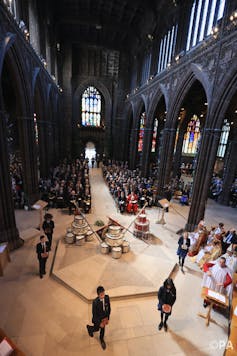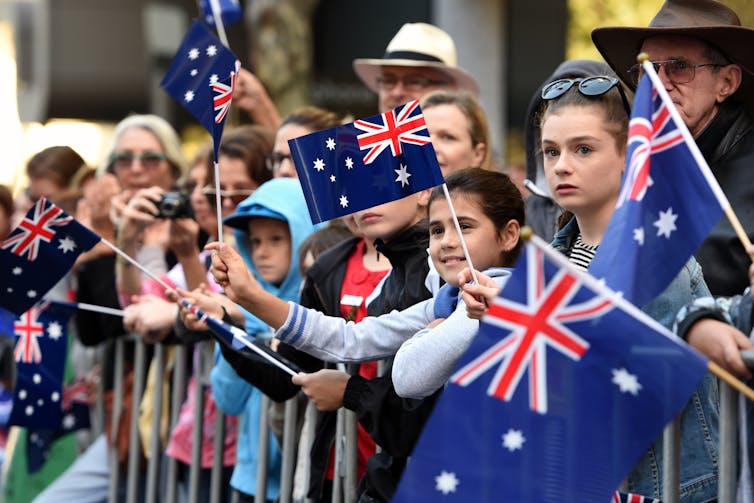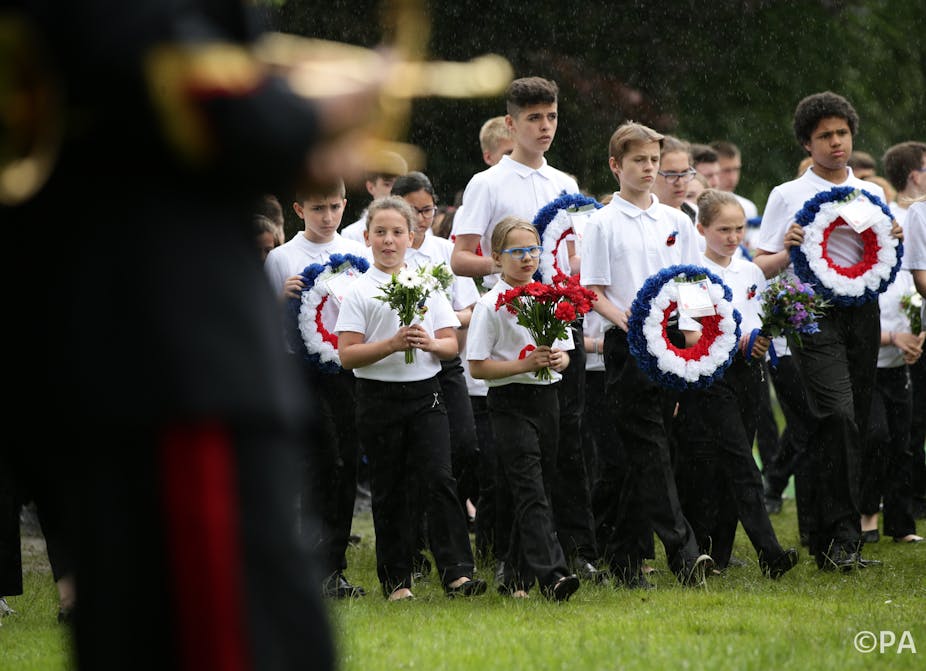As commemorations to mark the centenary of the Battle of Somme begin, its clear that World War I retains a lingering and vivid presence in the countries which fought in it. But the unfolding centenary anniversaries can also be understood as a moment of heightened anxiety about the future of the way the war is remembered.
As we move further away from the original event itself, much state-sponsored centenary activity in the UK, Australia and New Zealand has actively targeted young people – singling them out as the “next generation”, charged with carrying the memory of what happened on the battlefield forward.

In these countries, the memory of World War I has been sanctified to such an extent that other perspectives beyond a sense of respect for those who were directly affected by the conflict is often overlooked.
In the UK, young people are taking centre stage in all the major government-funded commemorative activities, the cornerstone of which is the £5.3m Centenary Battlefield Tours Programme, which aims to take 12,000 secondary state school pupils from England to the memorials on the western front between 2014 and 2019 as part of a national education initiative.
Revered status
Such investment, in a time of economic austerity, requires scrutiny, particularly regarding what ideas about the conflict are emphasised and at the expense of which alternatives. For example, whether children are being asked to reflect on civilians, pacifists or survivors – rather than solely the military dead – or to explore Britain’s uncomfortable relationship to its imperial past.
One secondary school pupil, who took part in a trip to World War I battlefields in spring 2015, told us how she might respond to a member of her coach party who felt remembering the war glorified conflict. She said:
I just really disagree with that viewpoint … it’s like walking into a church and you know saying that you love the devil and you hate God and everything. It’s not appropriate … the tour was to remember and to learn about that you know not many people there are going to put their hands up and agree with you because that’s not the purpose of going.
Much of the UK government’s commemorative activities involving young people are semi-religious, reverential and ritualistic. This risks closing down the opportunity for students to question the purpose of the war, to explore notions of the war’s futility in the light of the outbreak of the World War II, or to consider which narratives of the war are being commemorated at the expense of others.
Anzac identity
In Australia and New Zealand, war remembrance is closely aligned with an Anzac identity. Purported to have emerged at Gallipoli in 1915, this ideal is framed around so-called “common values” of “mateship, courage, equality, self-sacrifice, duty and loyalty”. It is central to museum education programmes that continue to attract thousands of school visitors.
At this year’s Anzac Day dawn service at the Australian War Memorial in Canberra, director Brendan Nelson addressed “young Australians” directly: “Your search for belonging, meaning and values for the world you want – ends here.”
Australia’s and New Zealand’s commemorative activities also share many of the core elements of British commemoration, for example the exhortation of Laurence Binyon’s ode “we will remember them” is used at Anzac Day dawn services. At the heart of all three national cultures of remembrance is a sense of unquestioning reverence for those who served.

In New Zealand, all schools participated in the Ministry of Education’s Fields of Remembrance project. This saw 80,000 white crosses with the names of local service personal who had died overseas hand delivered to schools and laid in the school grounds, where along with poppies and posters they became the focus of war commemorations.
In Australia, pride has been used to encourage young people to connect with their country’s World War I history. Teenage duo The Berrys won the 2016 ACT Premier’s Anzac Spirit Prize with Proud, a song that thanks a dying Australian soldier and his mates for “a legend to be proud of”.
Amid these official celebrations, there appears to be little space for different perspectives on war remembrance in the UK, Australia and New Zealand that go beyond pride and reverence of the armed forces, are inclusive of difference and allow young people to think critically about the significance of World War I. But if we are serious about the memories of the conflict surviving in all their diversity, we need to equip and encourage young people to engage critically as well as emotionally with this cataclysmic event, and with what it might say to us in the 21st century.
The authors would like to thank to Christina Spittel, lecturer in the school of humanities and social sciences, University of New South Wales, Canberra for help with the Australian examples.

